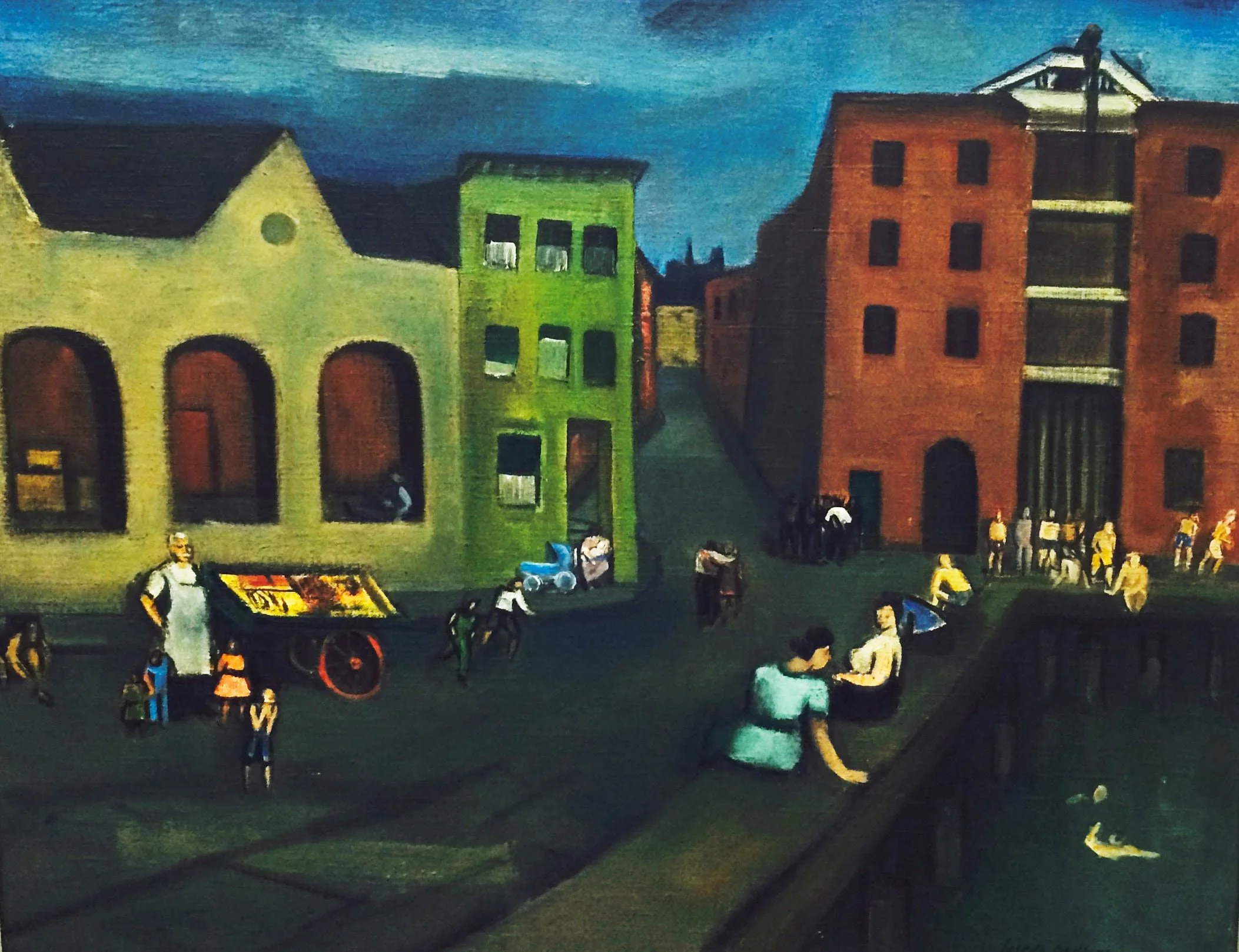Letters, Imagination, and the Effort of Memory in Nona Fernández’s The Twilight Zone
Nona Fernández, The Twilight Zone, translated by Natasha Wimmer. Graywolf Press, 2021. 232 pp. $16.00.
Dear Nona Fernández,
When I lived in Chile between my freshman and sophomore years of college, I stood atop a hill overlooking the ocean in Viña del Mar. From this perch, I watched gray waters stretch out to the horizon and roll back in on the beach of the bustling port city. I hail from mountainous, desert Utah, Estados Unidos. Chile was the most time I’d spent near the sea.
Your novel took me back there. To the flat downtown that always reminded me of Paris, except it stretched out toward the beach. And, opposite the coast, rolling hills decorated with rows of colorful houses. Each with its own name, the homes gradating from estates at the base to shacks at the peak. I breathed in salt air from the top of Chorrillos.
I remember where I was the first time I heard the story. The crisscross of streets atop that hill, a tiny house with old bikes tipped over each other in the yard. Sitting on a musty couch. Dictatorship, military rule, family members who never came home. They never returned from work one day. There are bodies at the bottom of the sea.
In your novel The Twilight Zone, you stage disappearances and deaths in your narrator’s imagination. She imagines Carol Flores, Don Alonso Gahona, José Weibel in their final moments: “I imagine and complete unfinished stories ... / I imagine and bring to life the traces of gunfire.” Reanimating these men in her imagination, she works to build a memorial to the dead and disappeared of the Pinochet dictatorship.
The Twilight Zone begins with a letter. Your narrator writes to Andrés Valenzuela, whom she knows as “the man who tortured people.”
Dear Andrés,
We don’t know each other, and I hope my boldness in tracking down your address and taking the liberty to write won’t stop you from reading this letter.
Andrés, an agent involved in disappearances and murders during the dictatorship, gave an interview to Cauce in 1984. He then fled Chile to France. Now, in the present, the narrator hopes to make contact. But in her efforts to connect, the boundary between reader and writer blurs. In the narrator’s imagination, the individual collapses into the collective:
Whose images are these in my head? Whose screams? Did I read about them in the testimony you gave the reporter or did I hear them myself somewhere? Are they part of a scene from your life or mine? Is there some fine line that separates collective dreams? Is there a place where you and I both dream of a dark room full of rats? Do these images creep into your mind, too, and keep you awake? Will we ever escape this dream?
In the narrator’s imagination—and in her letter—she can hardly tell the difference between her own memories and Andrés’s. She cannot separate her dreams from his. Imagination connects them; her letter tethers them together. They are united in a moment of reading, imagining, writing. And as I read the narrator’s letter, though it was not addressed to me, I too become part of the “we.” Will we ever escape this dream?
Your narrator admits: “Even now I can’t shake it and maybe that’s why I’m recording it here, as a way to let it go.” We can only escape by entering. And imagination is the only way to enter a moment kept secret, hidden, silent: deaths, disappearances, screams.
The way I like to think of it, a letter is a site of imagination. I won’t see you read this letter, so I must conjure you up in my imagination, write toward that imagined version of you, like your narrator did toward the man who tortured people. To write to Andrés, she imagines connection. “As I write now, I pull up the image on my screen again. ... The man who tortured people looks me in the face as if it’s really me he’s talking to.” I do not know you, have never met you—only, in a sense, on the page, where I see the earnest faith you imbue your narrator with in the power of imagination.
Your narrator asks: “How is a museum of memory curated? Who chooses what to show? Who chooses what to leave out?”
She walks through the Museum of Memory and Human Rights. There, it may be the state, or archivists, or donors who make those choices. At the memorial ceremonies she attends, I imagine it’s the family—the children—of the disappeared, trying to preserve a memory, to stave off forgetting. And the documentary your narrator produces depends on available footage and records. The Twilight Zone is another attempt to curate a museum of memory, to animate the disappeared. Among them, Carol Flores, Don Alonso Gahona, José Weibel.
But there are limits to the power of imagination. Your narrator, trying to contact Andrés, writes: “It’s hard for me to imagine him [in France]. Everything goes out of focus after he leaves Chile.”
And when we approach the moment of José Weibel’s death, “the protective spell is broken, his body is tossed into the river, and he disappears forever. No rescue from any distance is possible in this exercise. Not even my runaway imagination can do a thing about that.” In these final moments, the ones we access in our imagination, we fail to change the outcome—we fail to save this man.
Imagination gets us there, to this moment, the one that no matter how hard we imagine, we can’t change. So why imagine? It takes effort. Your narrator remarks that “there are easier things for me to imagine.” There are easier things for me to imagine, too, as I try to labor alongside her. I grow sick to my stomach, need to open a window.
Constructing a memorial requires imagination. Imaginings are “snapshots, like the pictures I keep of my son, my father, my mother, my friends, the people I love. Protective, luminous images that foster connection despite death and the passage of time.” When we imagine, we rise to meet the plea echoing through The Twilight Zone: “Remember who I am ... Remember where I was, remember what was done to me. Where they killed me, where they buried me.”
When I returned to Chile two years after watching the sea from Chorrillos, where bikes tangled into each other on the lawn at the top of the hill, I took the metro to Estadio Nacional. I remembered whispers that folk singer Víctor Jara had been tortured there, in the national stadium. Right at the start of the disappearing years.
I hopped off the metro and walked two sidewalk blocks through the cold winter light. I strained through the bars to see inside, then kept walking. Guards patrolled the premises; I was too afraid to ask if I could look. I wanted to pay homage just by standing there, just by being there, imagining what happened. The green turf, empty stadium seats, the roars that filled the place that night. Jeering soldiers presented Víctor Jara a guitar and demanded that he play with broken hands.
When I researched it later, I realized I was in the wrong place, the wrong stadium. There are many soccer stadiums in Santiago.
The Twilight Zone ends with a letter. The last words your narrator writes are directed to Andrés. She first imagines him in France, “in your new life,” where “you’re probably in bed, / awake or asleep, dreaming of rats ... / Of women and men screaming, / of letters from the future inquiring about those / screams.” She then remarks that:
When I was a girl I was told that stars
were the bonfires of the dead.
I didn’t understand why the dead
lit bonfires.
I assumed it was to send smoke signals.
How else could they communicate
with no phone, no mail?
With a girl’s perspective, the narrator can’t imagine the dead don’t want to communicate. They must want to tell her something, somehow, even if they can only use smoke signals. Her assumption that the dead are desperate to communicate reflects her own longing to receive a message.
The narrator imagines that Andrés replies to her letters. “Yes, sometimes I dream of rats,” he confirms, “Of dark rooms and rats. / Of men and women screaming / and of letters from the future.” Then: “You’ve told it better than I could. Your imagination is clearer than my memory.”
I regret I don’t remember the name of the woman who told me about the bodies at the bottom of the sea. I don’t even remember what she looked like. And I fear going back there, recreating a memory where there isn’t one, trying so hard to reconstruct it. But maybe I should try. I’ll start with what I know: that house and the tires, and the view of the coast, tied to the knowledge I have of thousands disappeared. And how, afterward, the knowledge felt like it was everywhere, stretching out to the horizon and rolling back in on the beach of this bustling port city.
Sincerely,
Morgan
About the author
Morgan Graham is an English Ph.D. student at the University of Minnesota. Her research focuses on nineteenth-century letters, life writing, women’s writing, and the novel. Graham is Associate Managing Editor at Pleiades: Literature in Context. You can read her work in Perspectives on Undergraduate Research and Mentoring, Colorado Review, Chicago Review of Books, & Salt Hill Journal.




